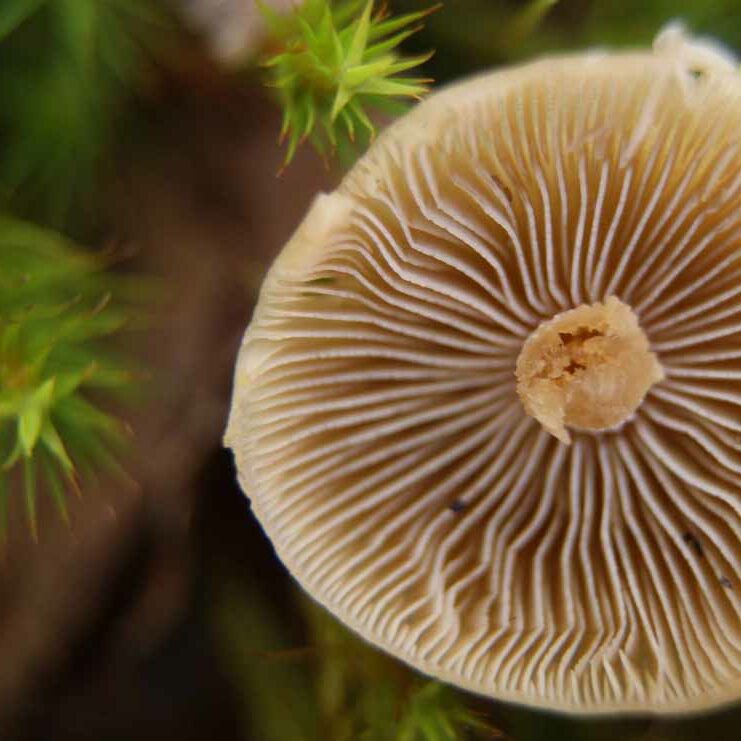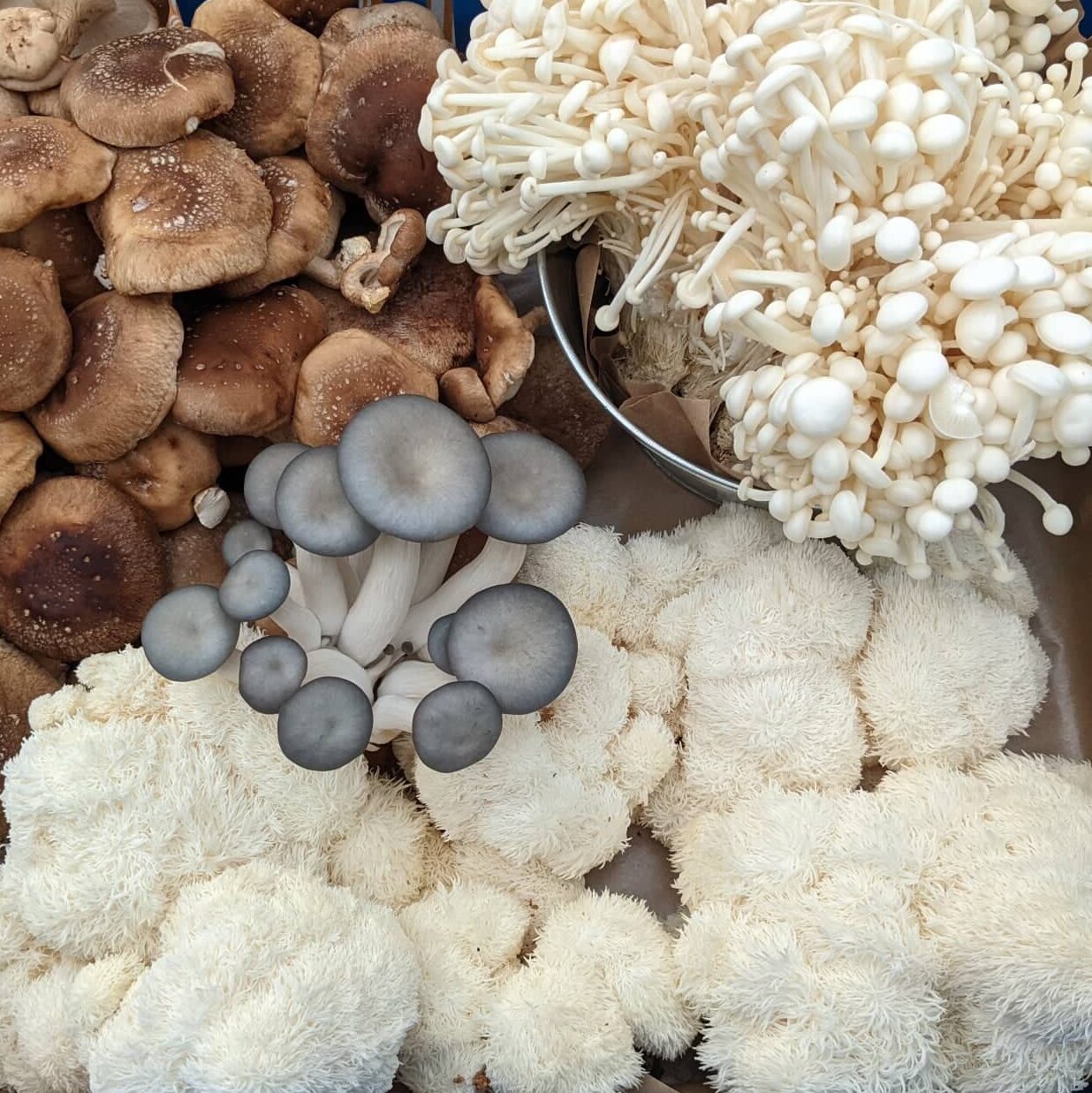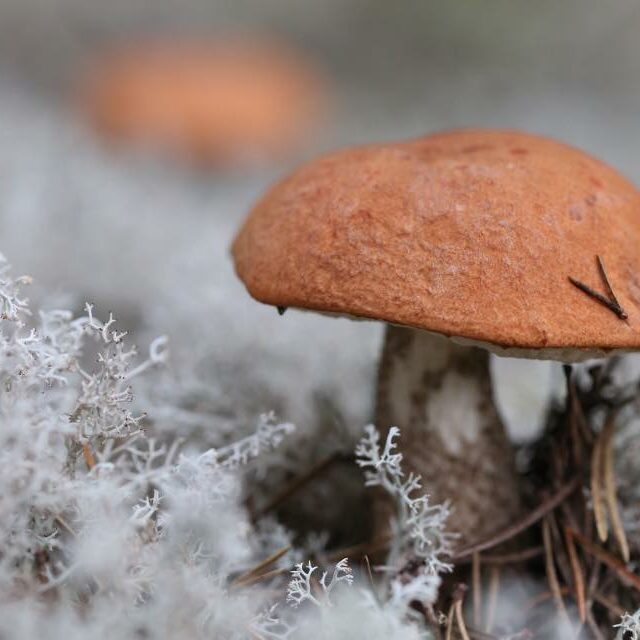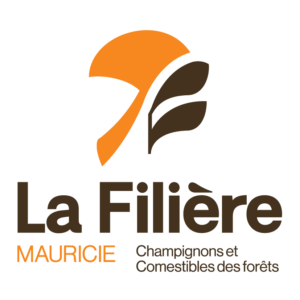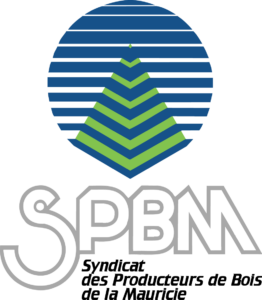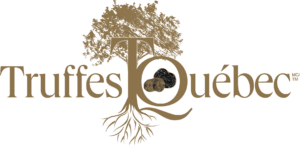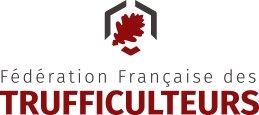View Results Again
Disclaimer
The information, photos, and guidance found on this website are provided for informational purposes only and must never replace the advice of a professional mycologist for mushroom identification. Only proper training or expert confirmation by a mycologist can allow you to safely identify wild mushrooms. When in doubt, a forager should always refrain from consuming any unknown specimen.
For Your Health – PRECAUTIONS WITH WILD MUSHROOMS (French)
Poison Control Center
If a toxic product is swallowed:
- Do not induce vomiting.
- Do not attempt to neutralize the product – milk is not an antidote.
- Rinse and clean the mouth.
- Call the Quebec Poison Control Center immediately:
📞 1-800-463-5060
Toll-free phone service (24/7).
What is acute poisoning?
Acute poisoning refers to a single or repeated exposure over a short period of time involving a child or adult who:
- Swallows a hazardous product: chemicals, incorrect medication doses, drugs, toxic mushrooms, spoiled foods, etc.
- Gets a dangerous product in the eyes or on the skin.
- Inhales vapors from a toxic product.
IMPORTANT: If the person is not breathing or is unconscious, call 911.
Cooking
When consuming wild mushrooms for the first time, or trying a new species, it is strongly recommended to eat only a small quantity to test for any intolerance or allergy. Also note: all wild mushrooms must be cooked before consumption. The authors and publisher of this website cannot be held responsible for any misidentification leading to mushroom consumption.
Always consult a professional mycologist to ensure correct identification of any species you intend to eat. Also remember: mushrooms stored in poor conditions — whose flesh is dead or decomposing — can be unsafe to eat, just like any spoiled or degraded food, and may lead to food poisoning or other health issues.
IMPORTANT: Never eat raw mushrooms.
Dehydrated Mushrooms
The vast majority of dehydrated mushrooms sold in our markets are imported from abroad and repackaged in Quebec. Often, there is no traceability. With the exception of easily recognizable species like morels, it is very difficult to know exactly what kind of mushroom you’re buying. These products are responsible for a number of poisonings. The main reason behind these imports is low cost. It takes approximately 12 kg of fresh mushrooms to produce 1 kg of dehydrated mushrooms. If 1 kg of fresh mushrooms sells for $30.00, the equivalent cost for raw material is $360.00/kg, not including slicing, drying, packaging, and marketing expenses.
To purchase Quebec-grown dehydrated mushrooms, expect a higher price and make sure to deal with a reputable and conscientious local processor.
For Your Health – MUSHROOMS ON THE MARKET (French)
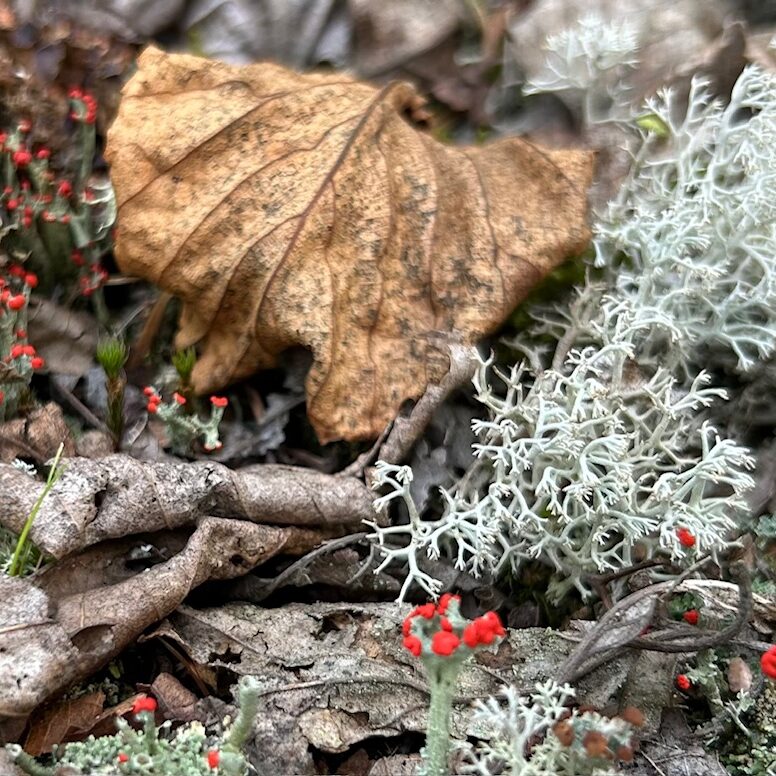
Mauricie Truffle Region
TRUFFLE, THE JEWEL OF THE MUSHROOM WORLD! EN
La Filière, the forest edibles development arm of the Syndicat des producteurs de bois de la Mauricie (SPBM), and Truffes Québec launched the first regional partnership for truffle cultivation development in Québec in 2020.
This partnership aims to inform, advise, and support forest landowners and agricultural producers in establishing truffle orchards. Field operations are conducted under the supervision of Jérôme Quirion, a truffle cultivation expert.
Truffles of Québec
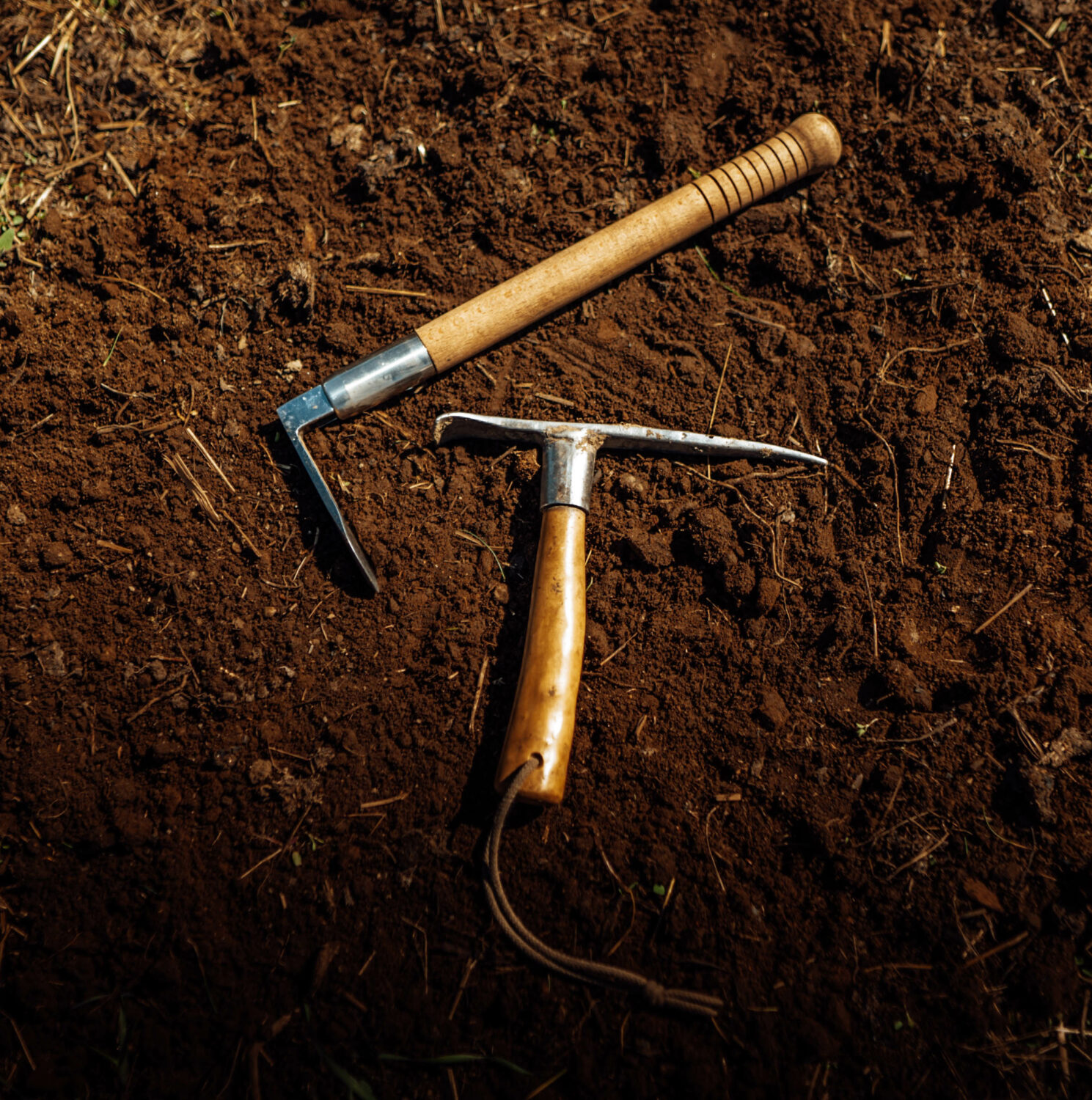
Two truffle enthusiasts, Jérôme Quirion of Truffes Québec and Dr. Véronique Cloutier, play a crucial role in the dynamic and promising development of truffle cultivation in Mauricie and across Québec. Thanks to their complementary expertise, they are helping to better understand and showcase Québec-grown truffles.
Until recently, the commercial potential of Québec’s native truffles remained largely unknown. The main reason is that truffles in Québec were being sought using the same methods as those used for Mediterranean truffles in Europe — even though they are different and require specific search techniques.
What is a truffle?
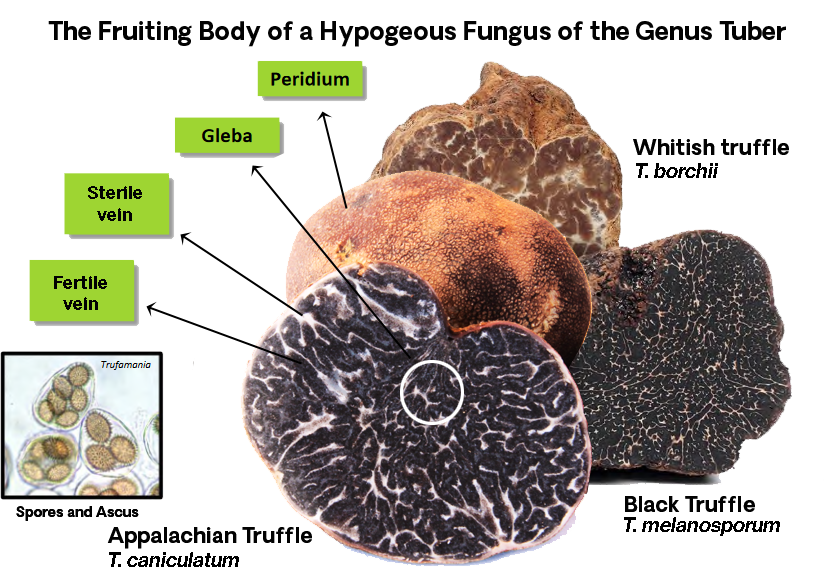
A truffle is the fruiting body of an underground fungus. This fruiting structure consists of a flesh (gleba) and a skin (peridium), which can be either smooth or warty. The truffle develops from a mycelium that lives in symbiosis with the roots of trees and has antibiotic properties that benefit the surrounding vegetation.
This symbiosis occurs through mycorrhizae, and when this association results from deliberate inoculation, it is referred to as controlled mycorrhization.
TRUFFEL FIELDS
The Arrival of Truffle Orchards in Québec
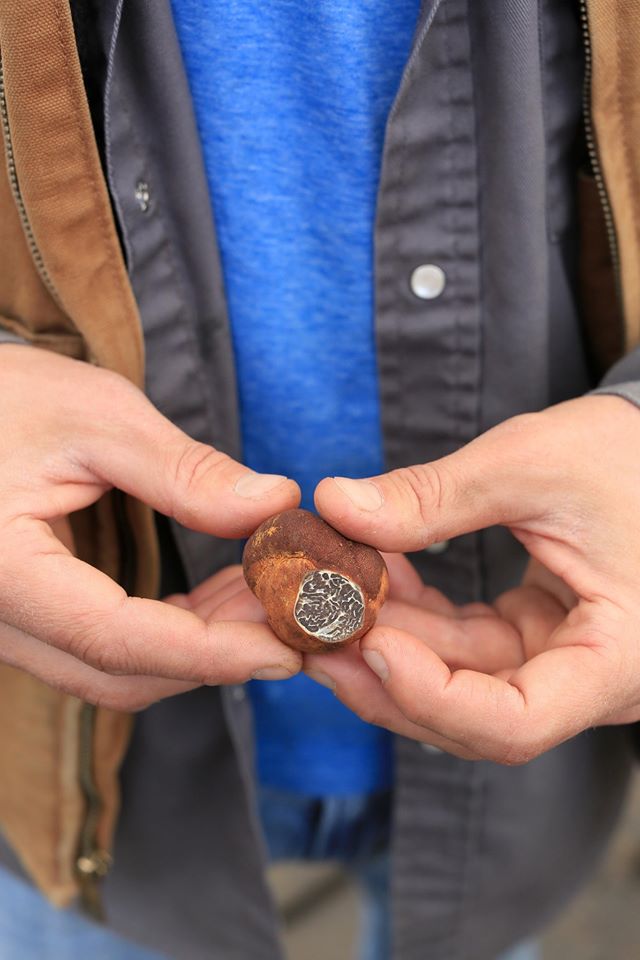
In 2009, a meeting between Jérôme Quirion and James Trappe of Oregon State University — a pioneer of truffle cultivation in North America — inspired Jérôme to develop truffle farming in Québec.
He enlisted the help of renowned truffle hunter and expert Francesca Marzitelli to locate the native truffle specimens needed for the production of his truffle-inoculated trees.
Today, Jérôme Quirion and his team at Truffes Québec are working to establish cultivation of Appalachian truffles (Tuber canaliculatum), along with other species such as the Burgundy truffle (Tuber uncinatum) and the Bianchetto truffle (Tuber borchii)
Five Steps to Establish a Truffle Orchard
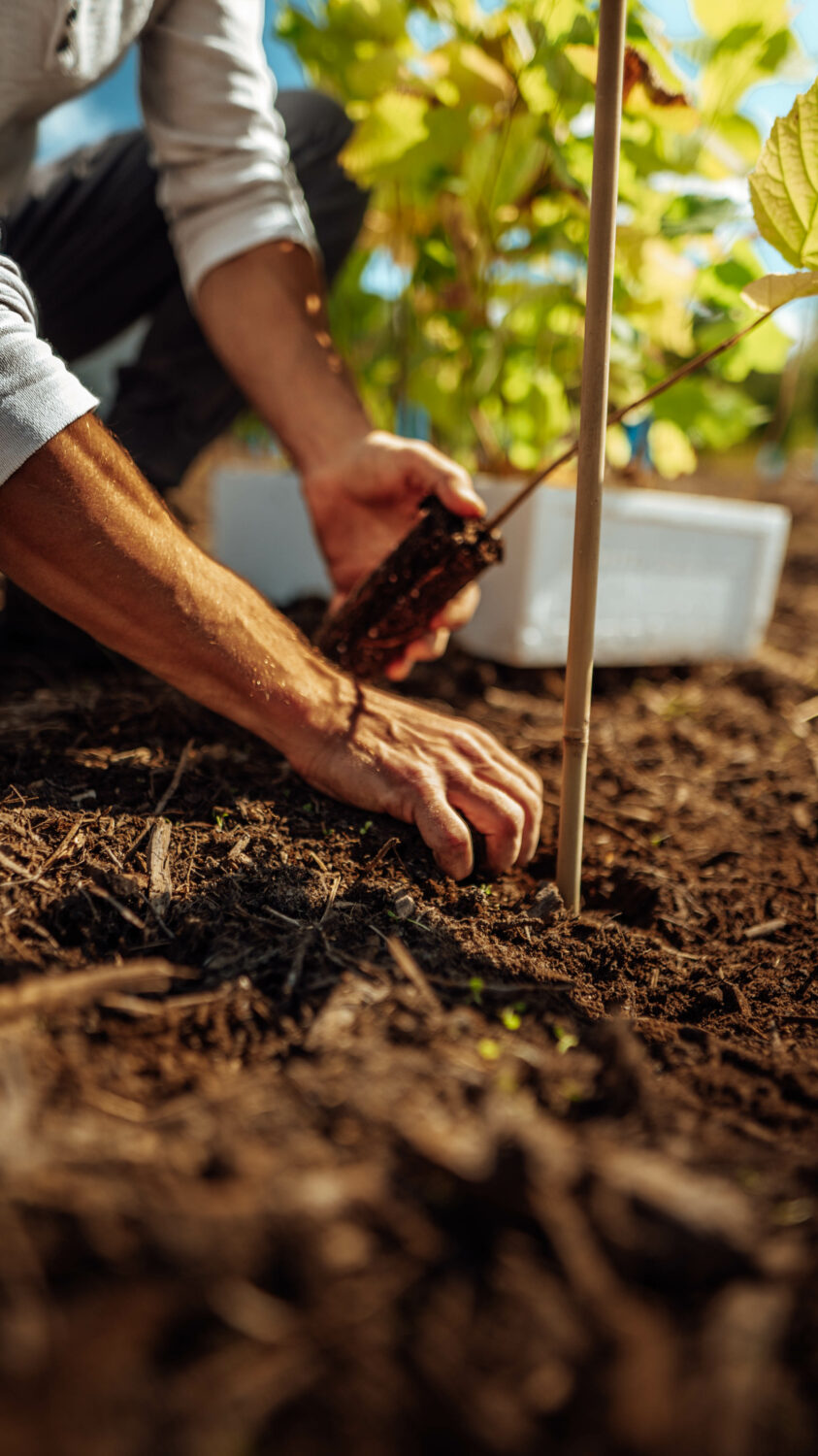
- The first step is to fill out the Truffes Québec information form. Once your registration is complete, the team will create your file and contact you. They will explain the benefits of becoming a producer member, as well as the details of the services and support offered.
- Ready to invest in a truffle orchard? During your consultation with Truffes Québec, they will inform you when they can conduct field data collection.
- Proper land preparation is essential to ensure the site is ready to receive the truffle-inoculated trees.
- Next comes the planting of the trees and the installation of protective guards.
- Finally, inspection and follow-ups are carried out according to Truffes Québec’s standards and requirements.
AN INFORMED CHOICE
The guidance provided by Truffes Québec will help you better plan your investment. If you would like a personalized consultation, feel free to contact Truffes Québec. You can also fill out the contact form if you’re interested in establishing a truffle orchard.
WILD TRUFFLES
The Discovery of Wild Truffles in Québec
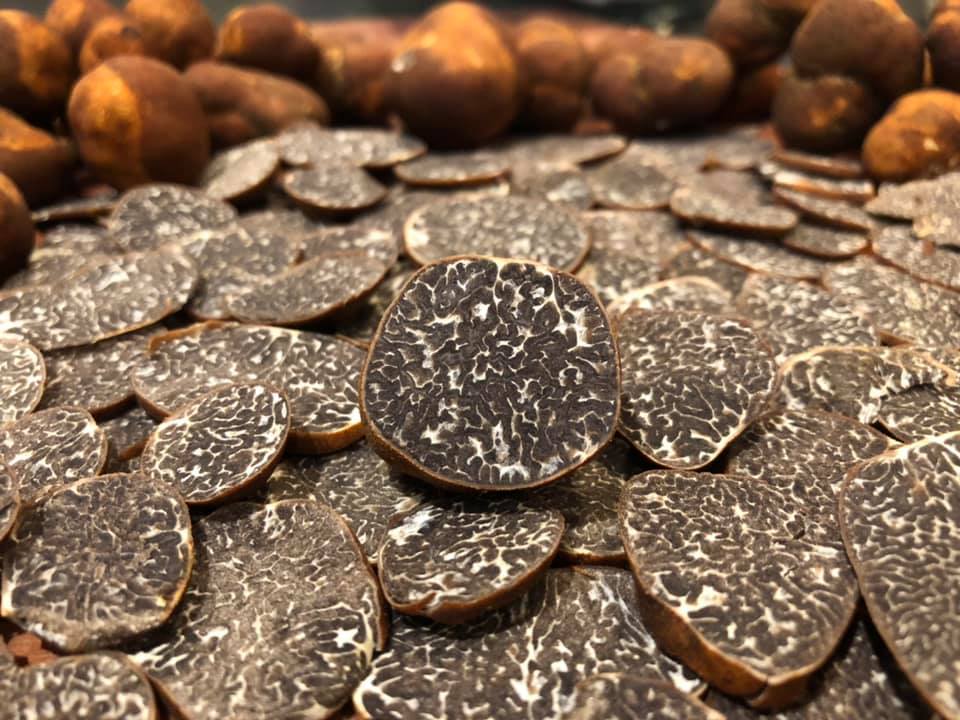
Dr. Véronique Cloutier’s insatiable desire to uncover the presence of wild truffles in Québec’s northern forests led her to discover that forest mammals know how to find them. They detect truffles by scent, consume them, and then disperse the intact spores through their feces. In 2017, using genomic analysis (DNA study), Dr. Cloutier confirmed the presence of truffles of interest in Québec. Here are the main species of truffles discovered—some of which are already being studied for their potential to be cultivated in open fields:
Appalachian Truffle (Tuber caniculatum)
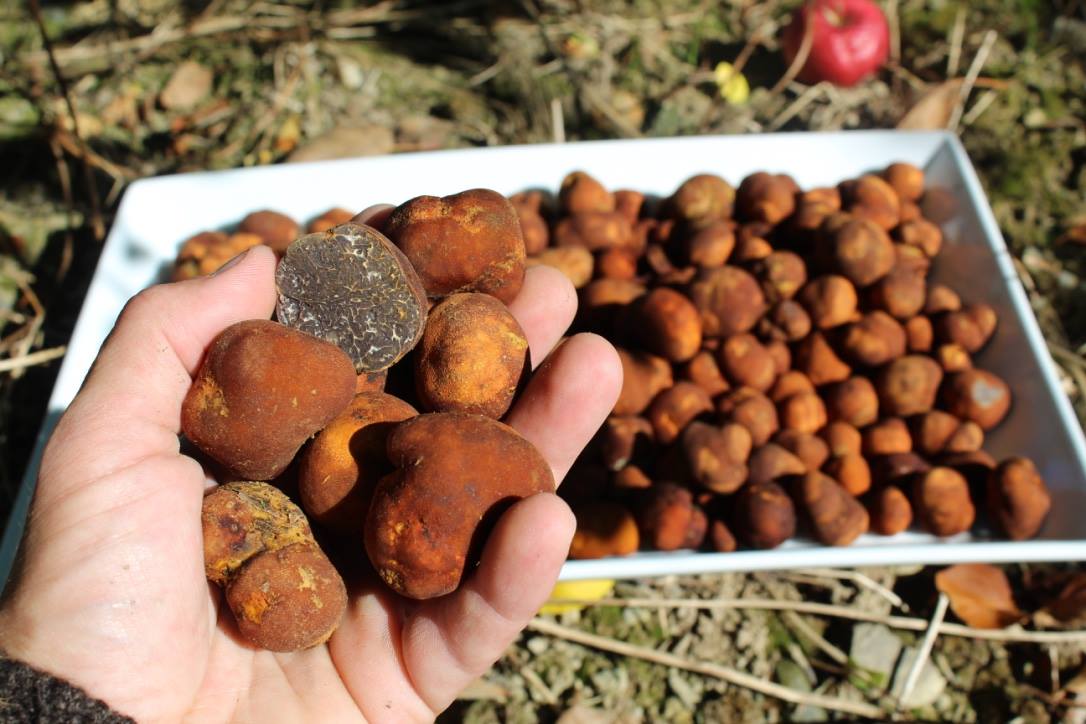
The growth window for this truffle is shorter compared to Europe, where black and white truffles grow during the winter thanks to a more favorable climate. This truffle is delicious and highly sought after worldwide.
Oregon Black Truffle(Leucangium carthusianum)
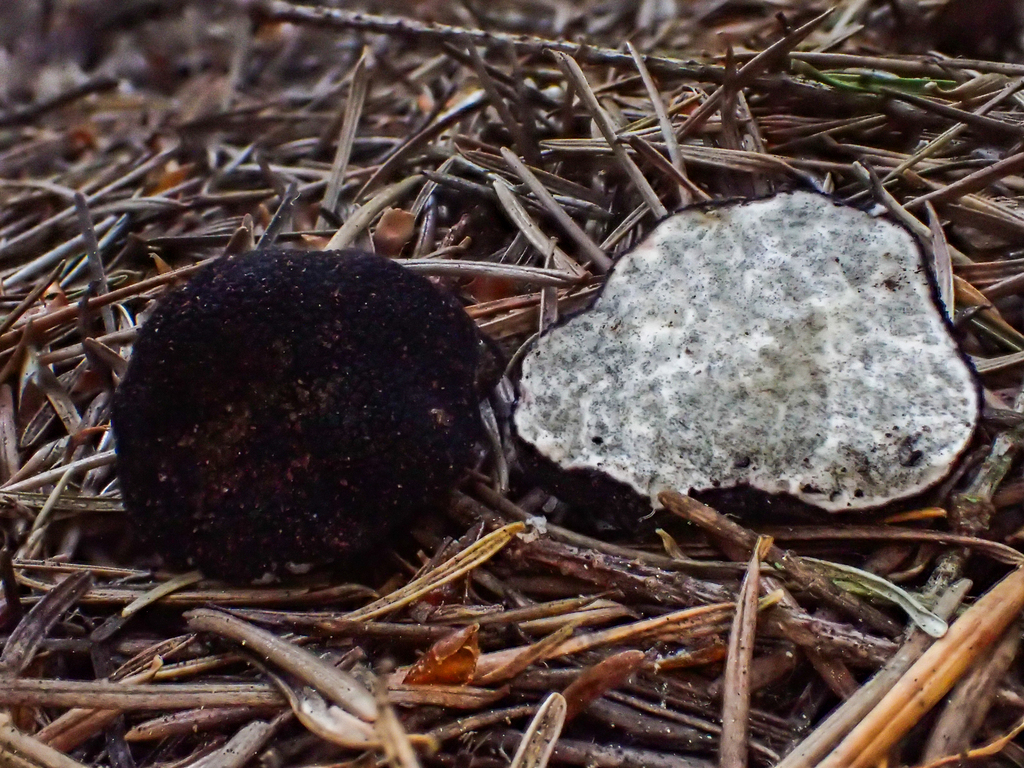
Research has shown that this truffle is present in Québec. It has high culinary and commercial value. Although its growing environment is still not well understood, its commercial potential makes it a research priority.
Lilac Truffle (Tuber rufum)
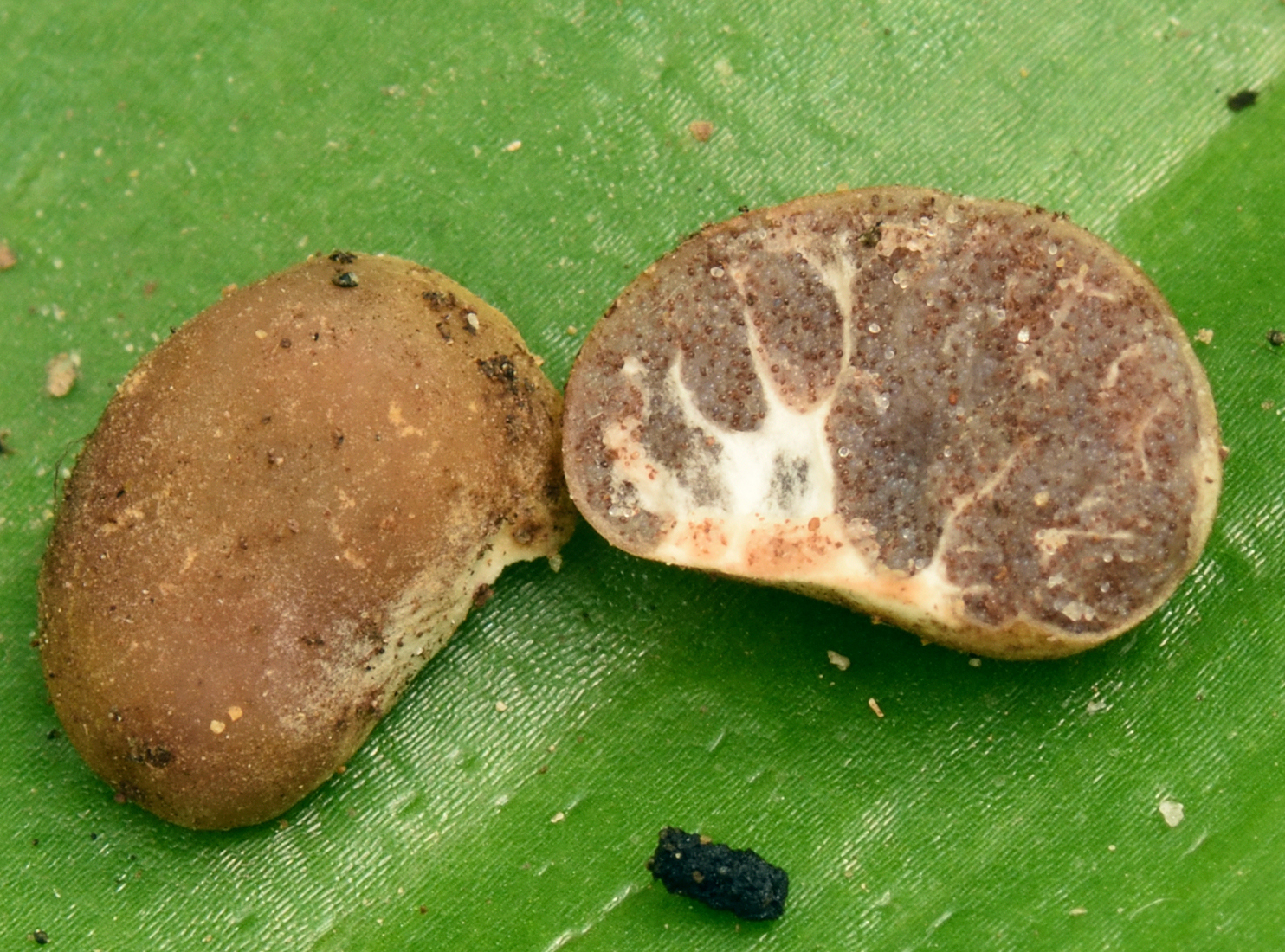
The Lilac Truffle was discovered on the campus of the Université du Québec à Trois-Rivières, which is one of only two known locations in Québec where this species has been identified.
Pecan Truffle (Tuber lyonii)
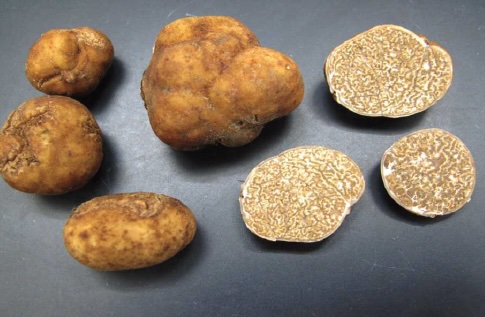
The Pecan Truffle (Tuber lyonii) was first reported by chance by growers raking the soil beneath their pecan orchards in Georgia. Beneath its thin yellowish-brown skin lies a marbled flesh with white veins, exuding a nutty, earthy aroma that is highly prized in cooking.
Discovered in Québec. Although native to the southeastern United States, this species has extended its known range into the province of Québec, where confirmed harvests show its ability to fruit in the cooler climates of northeastern North America.
The Piché Truffle (Tuber pichei)
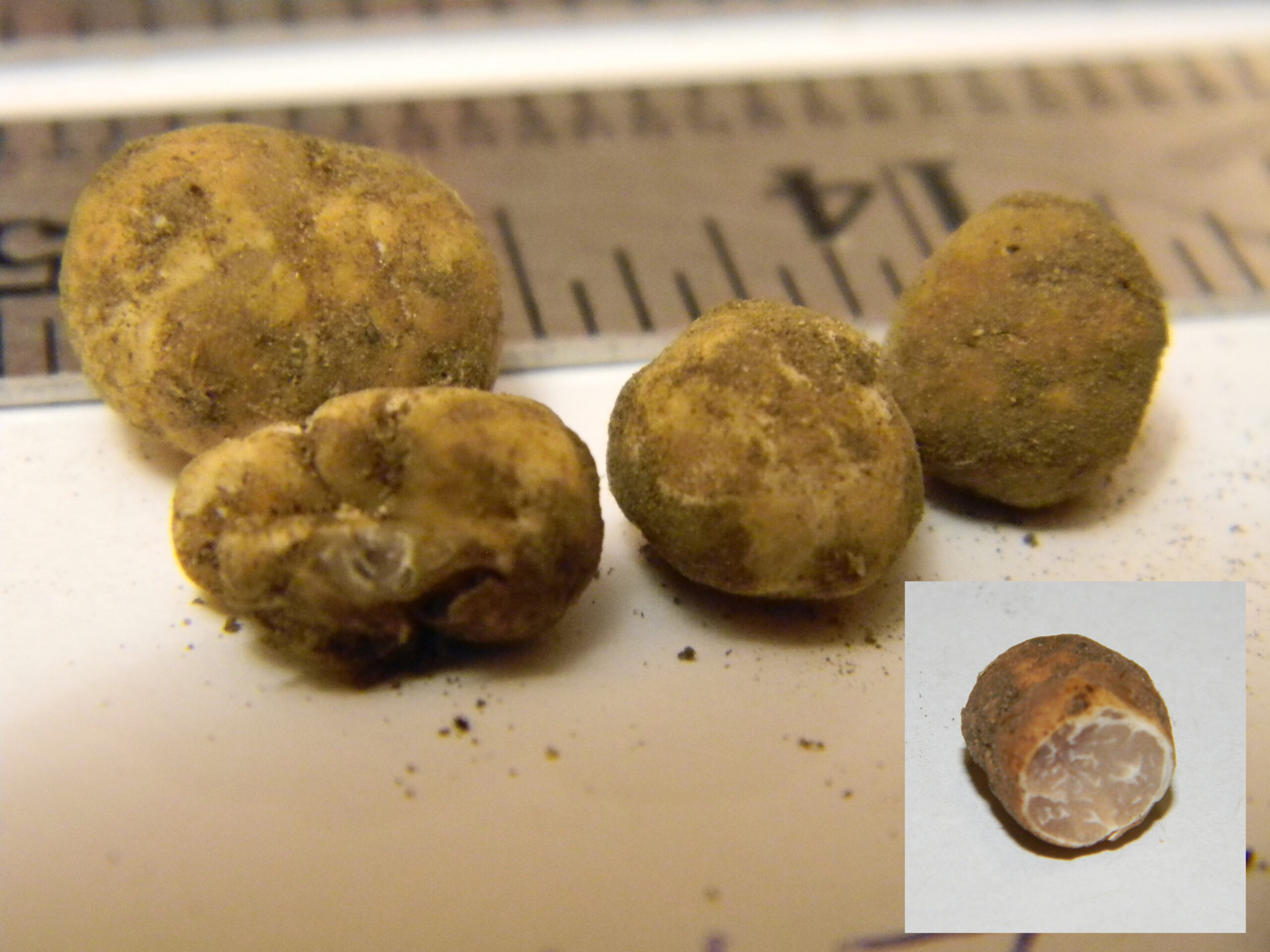
Thanks to the research of Dr. Cloutier, La Filière Mauricie is the first organization to announce the discovery of this unique truffle in Québec. Named in honor of Dr. Yves Piché, this truffle appears to reach maturity very late in the fall, after the first snow has fallen. Further research is needed to learn more about this one-of-a-kind gem.
The Pacific Truffle (Tuber pacificum)
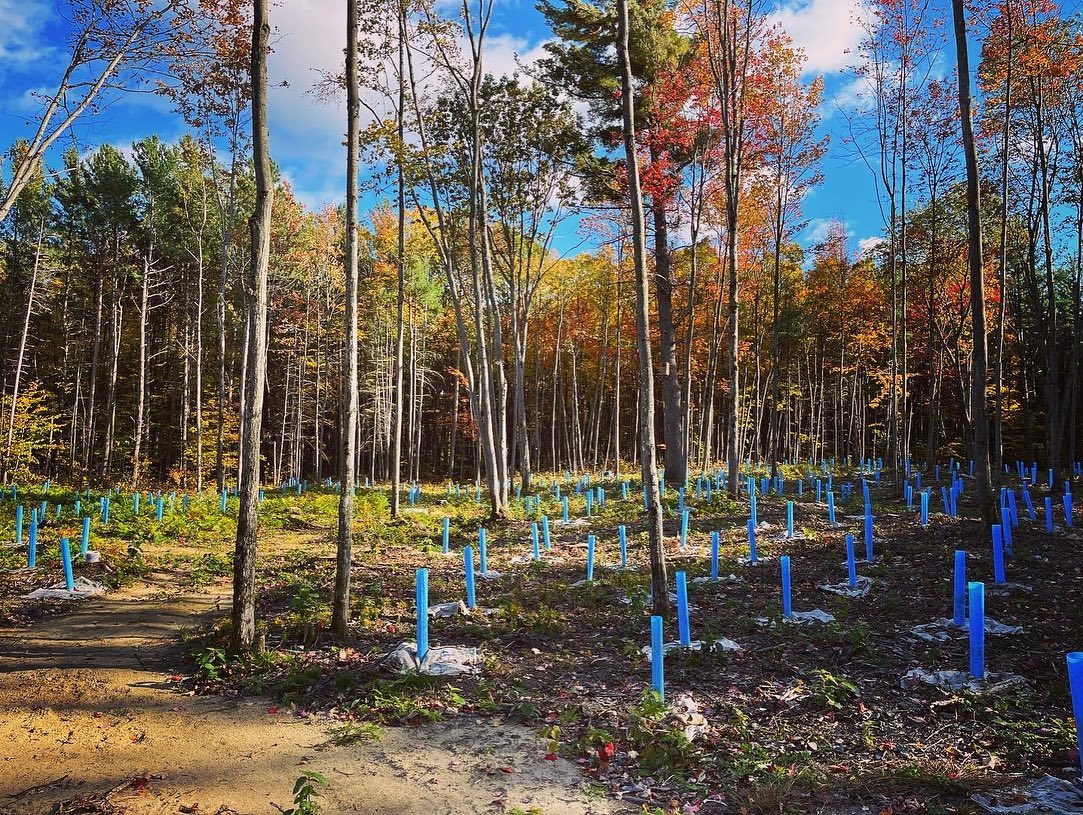
Never photographed, this truffle is among the rarest in the world. The few specimens found on the Pacific Coast share the exact same DNA sequence as the spore samples found in mammal droppings in Québec. Even if we were to confirm that this truffle is native to Québec, we still wouldn’t be able to rename it, even if the West Coast strain originally came from an introduction.

